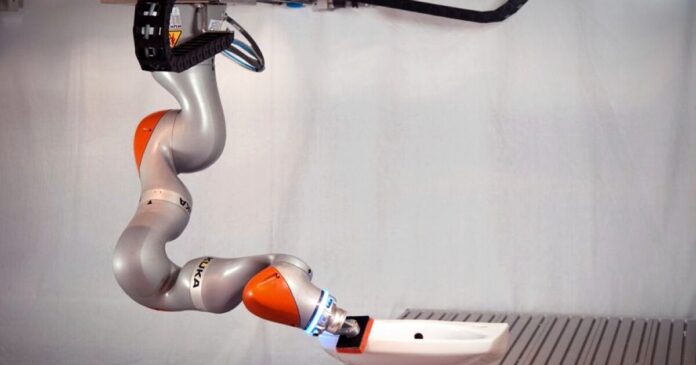Introduction to Robot Servants
From washing urinals to tidying up the beach, we can already see a future where our robot servants help keep our world a little cleaner. Now, a robotic arm has mastered the surprisingly complex task of sink washing, showing off its ability to learn. This innovation is a significant step towards creating robots that can assist humans in various tasks, making our lives easier and more efficient.
The Complexity of Sink Washing
Cleaning a wash basin might not sound like the most advanced of tasks, but when you think about it, a lot goes into it. You have to intuitively know what angle to employ your sponge at, understand how much force to apply to different parts of the sink based on the grime, and readjust your body constantly as you move along the surface. It’s certainly easy for us humans, but if you’re a programmer working with a just-starting-out robot, it’s a lot to code. Andreas Kugi from the Automation and Control Institute at TU Wien in Austria explains that capturing the geometric shape of a washbasin with cameras is relatively simple, but teaching the robot which type of movement is required for which part of the surface, how fast the motion should be, what’s the appropriate angle, and what’s the right amount of force is much more difficult.
Teaching Robots to Learn
Understanding that programming all of those data points and combinations was a herculean task, Kugi and his team decided to let their robotic arm learn to do the task by observing someone else doing it. They developed a special cleaning sponge equipped with force and position sensors and had a person use it to repeatedly clean just the front edge of a sink that had been sprayed with a dyed gel imitating dirt. They then used the data collected from those exercises to train a neural network that could translate the input into predetermined movement patterns. They fed those patterns to the robot and let them inform its movements as it sets out about the task.
Federated Learning
While the experiment was focused on sink cleaning, the researchers say that it demonstrates the fact that the robot arms could carry out a range of tasks on different, varying surfaces including sanding, painting, or welding sheet metal. What’s more, they say a fleet of robots could learn the basic moves from each other through what’s known as "federated learning" and then they could apply those moves to their individual, specified tasks. Let’s imagine many workshops use these self-learning robots to sand or paint surfaces. Then, you could let the robots gain experience individually with local data. Still, all the robots could share the parameters they learned with each other.
Conclusion
The development of robots that can learn and adapt to new tasks is a significant step towards creating a future where robots can assist humans in various aspects of life. The experiment conducted by Kugi and his team shows that robots can learn complex tasks like sink washing by observing and imitating human movements. With the potential for federated learning, where robots can share knowledge and learn from each other, the possibilities for robot servants are endless. As we continue to advance in this field, we can expect to see robots taking on more complex tasks and becoming an integral part of our daily lives. A paper describing the team’s work is available from TU Wien, and it was recently submitted to the IROS 2024 conference, where it was awarded the "Best Application Paper Award."

